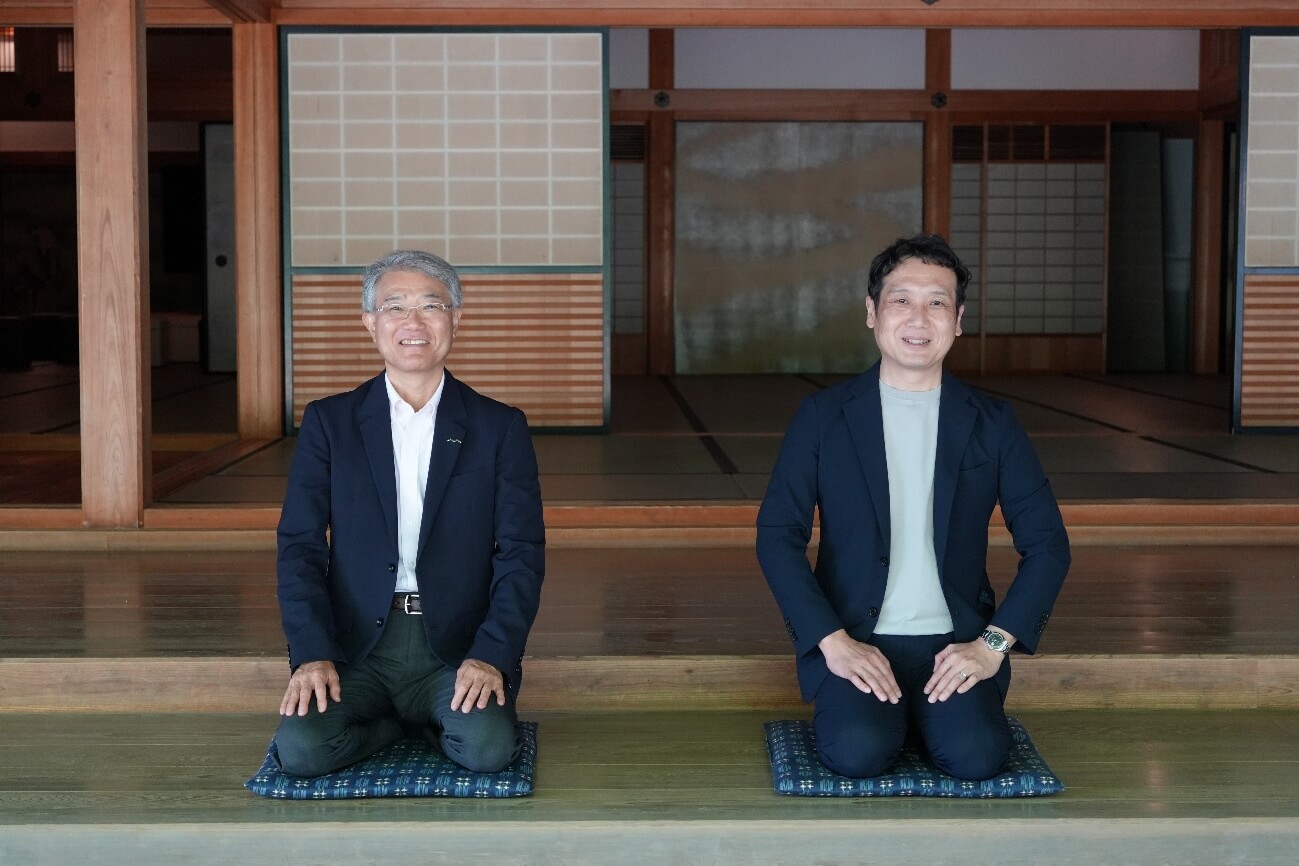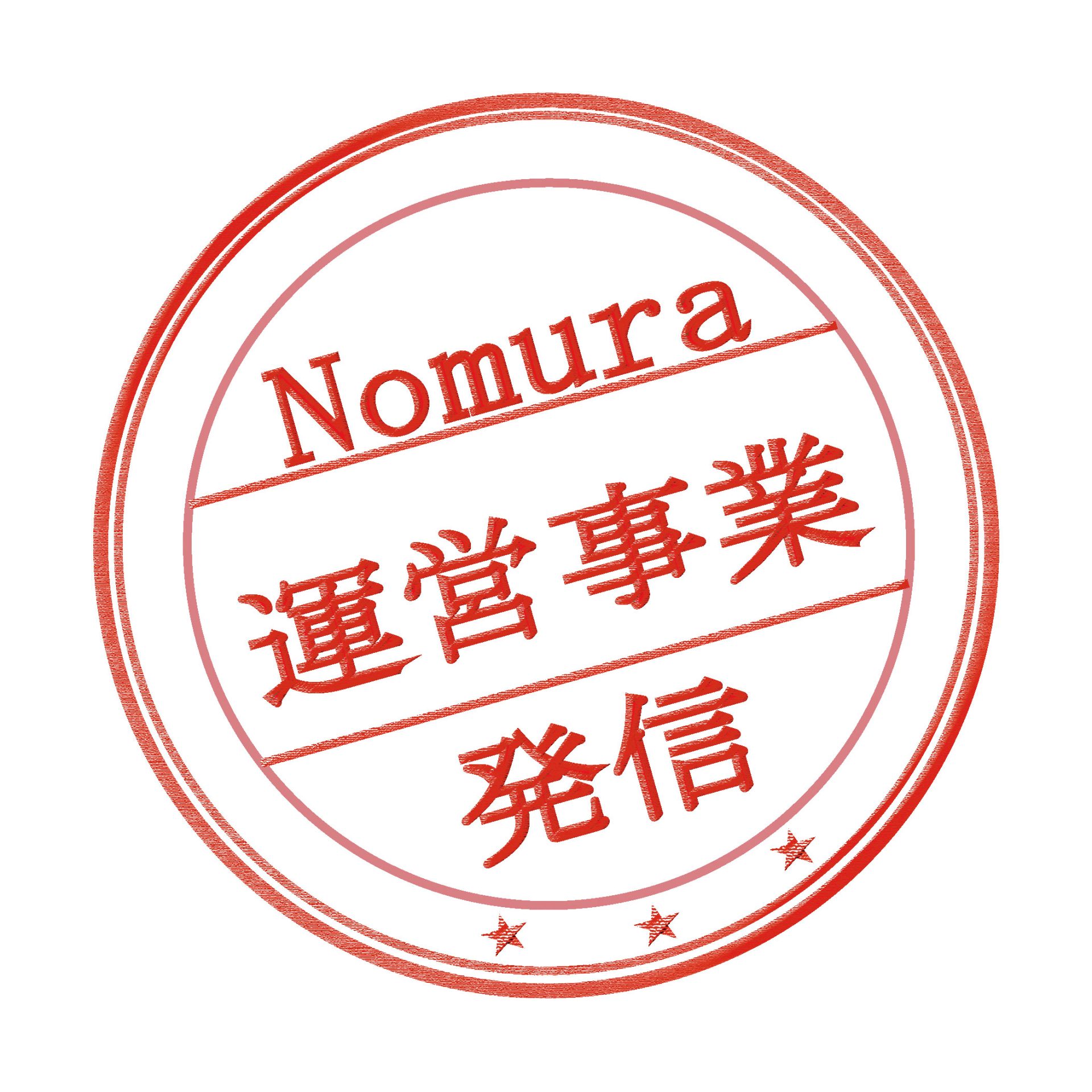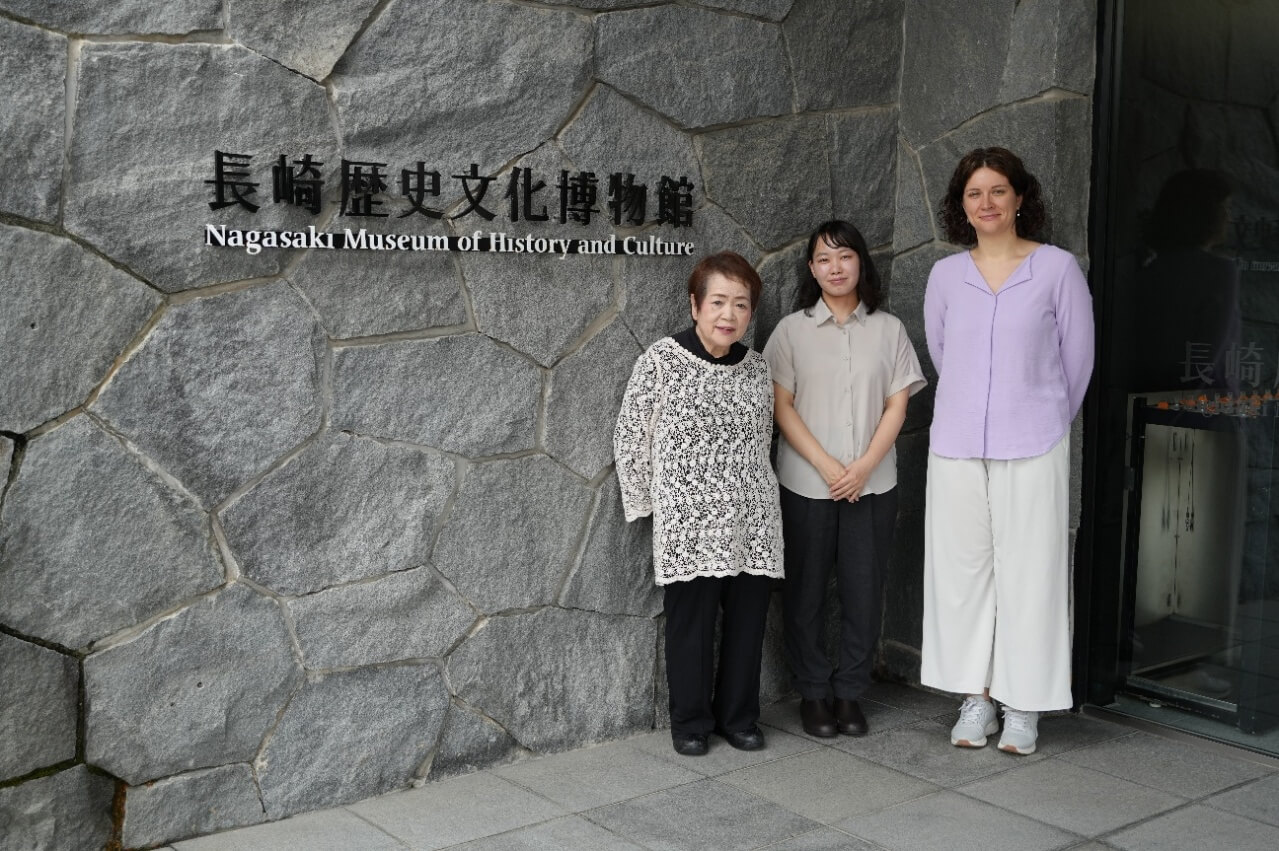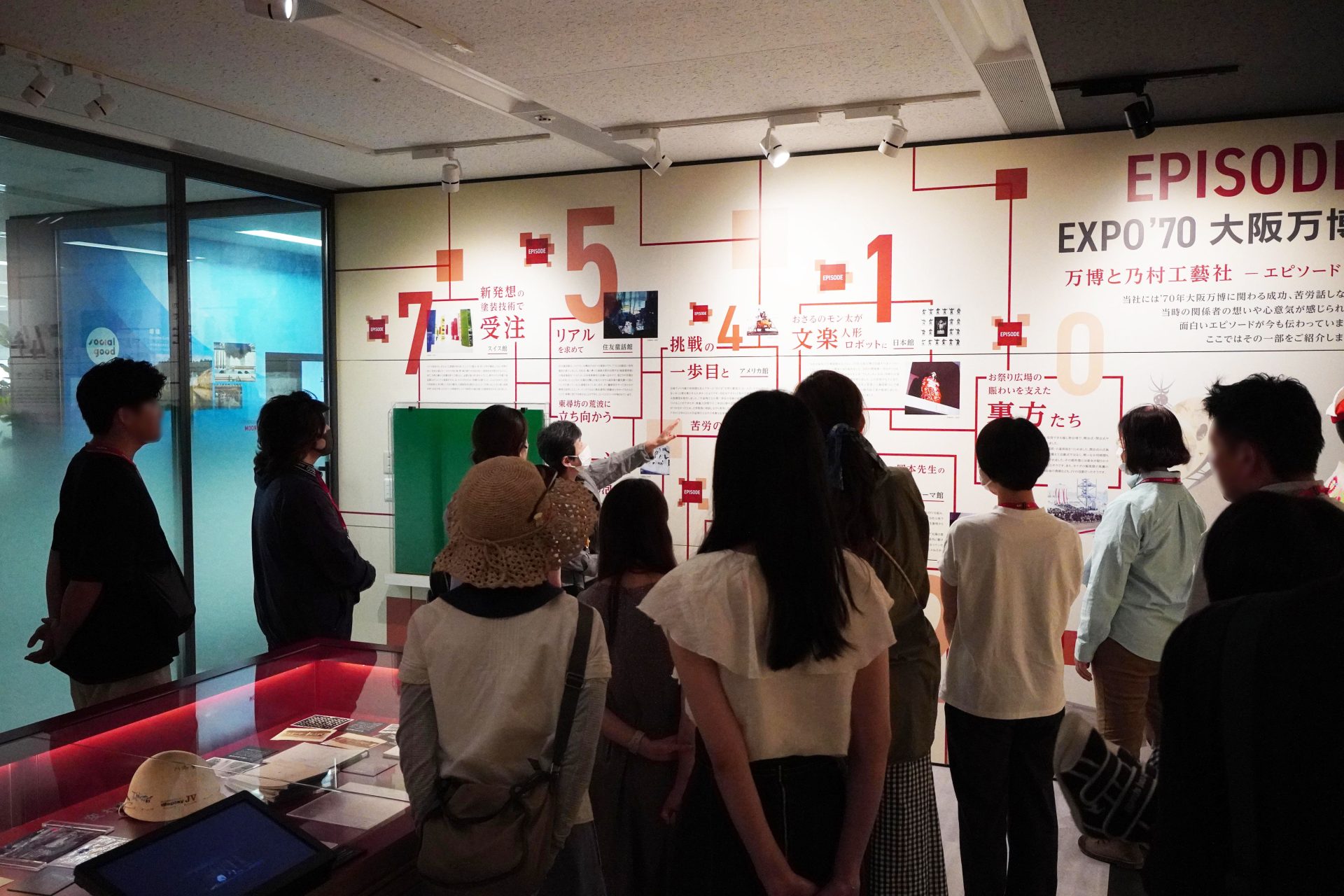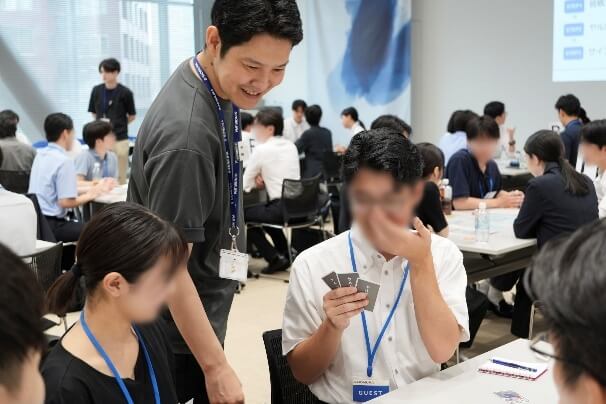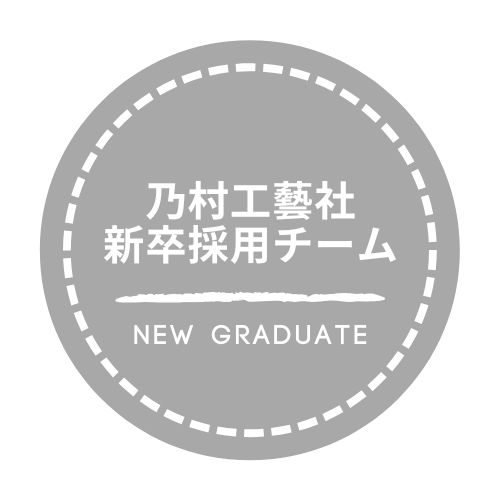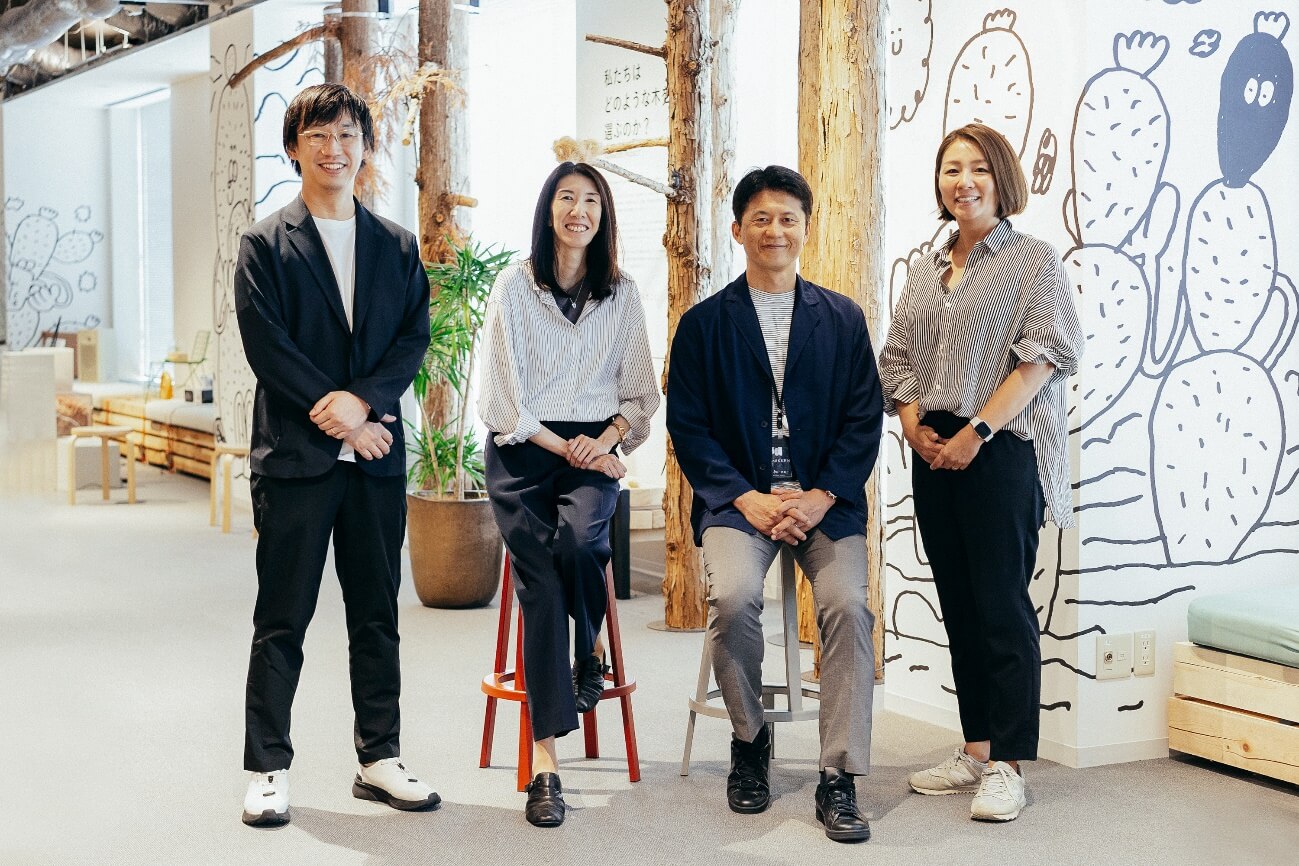
Predicting changes in consumer behavior,
Gaining insight into the future of space
2024/11/20
- text and edit by
- Future Creation Research Institute
How will lifestyles and spaces change in 2030? NOMURA Co., Ltd. 's Future Creation Laboratory is working on a project to gain insight into "future spaces" by analyzing "signs" that are currently appearing in the world. As the first result of this project, the future insight report "Re:ZONING Phase I" was released in April 2024, which predicted "11 behavioral changes in consumers." In a talk session held in July, the panelists discussed how consumers will change in the future and what changes are predicted for the spaces surrounding them, using this report as a subject.
[Speakers]
Panasonic Holdings Co., Ltd.
Corporate R&D Strategy Office Panasonic Laboratory Hiromi Iida
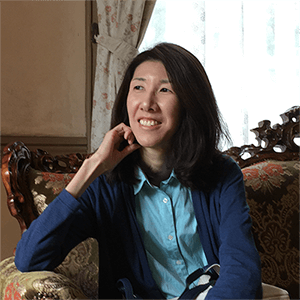
After working in the R&D department of Panasonic, where he was responsible for developing embedded software for digital AV devices, he was involved in digital marketing in the marketing department. After that, he is now in charge of implementing and researching innovation processes such as future insights, as a companion to employees who are taking on new business ventures in his current department. In the future insights activity "KIZASHI LAB," employees create future scenarios.
Nikken Sekkei Research Institute Ltd.
Executive Officer, Public Space Design and Management Business Leader, Takahiro Ogawa

After joining Nikken Construction, he worked at Nikken Sekkei Civil Engineering before transferring to Nikken Sekkei Research Institute, Nikken Sekkei's think tank division. He has worked on a wide range of projects from civil engineering design to urban planning, town development, and urban management strategies, and is currently focusing on the utilization of public spaces through public-private partnerships and regional revitalization businesses. In the activities of the company's co-creation platform "PYNT," which creates new options for the future of towns, the 10 FUTURE COLLECTIVES are set as themes for the desired future.
NOMURA Co., Ltd. Co., Ltd.
Akane Yamaguchi, Director of NOMLAB, Future Creation Research Institute, Creative Division
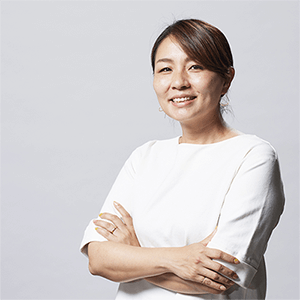
As a designer, he is involved in a wide range of direction, including promotional spaces and exhibitions for companies and regions, and experiential content. As the number of projects addressing social issues such as diversity and SDGs has increased, he is also in charge of his company's social good strategy, and from 2024 he will be the head of NOMLAB, the Future Creation Research Institute, which will carry out R&D activities to create spaces of the future.
Moderator
NOMURA Co., Ltd. Co., Ltd.
Yuichi Saito, Director of the Future Creation Research Institute, Creative Headquarters
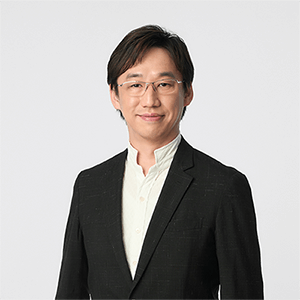
As a planner, he works on branding and creating communication spaces for major private companies. In 2021, he launched his company's social good strategy, and in 2024, he became the head of the Planning and Production Center and the Future Creation Research Institute.
Why do we foresee the future?
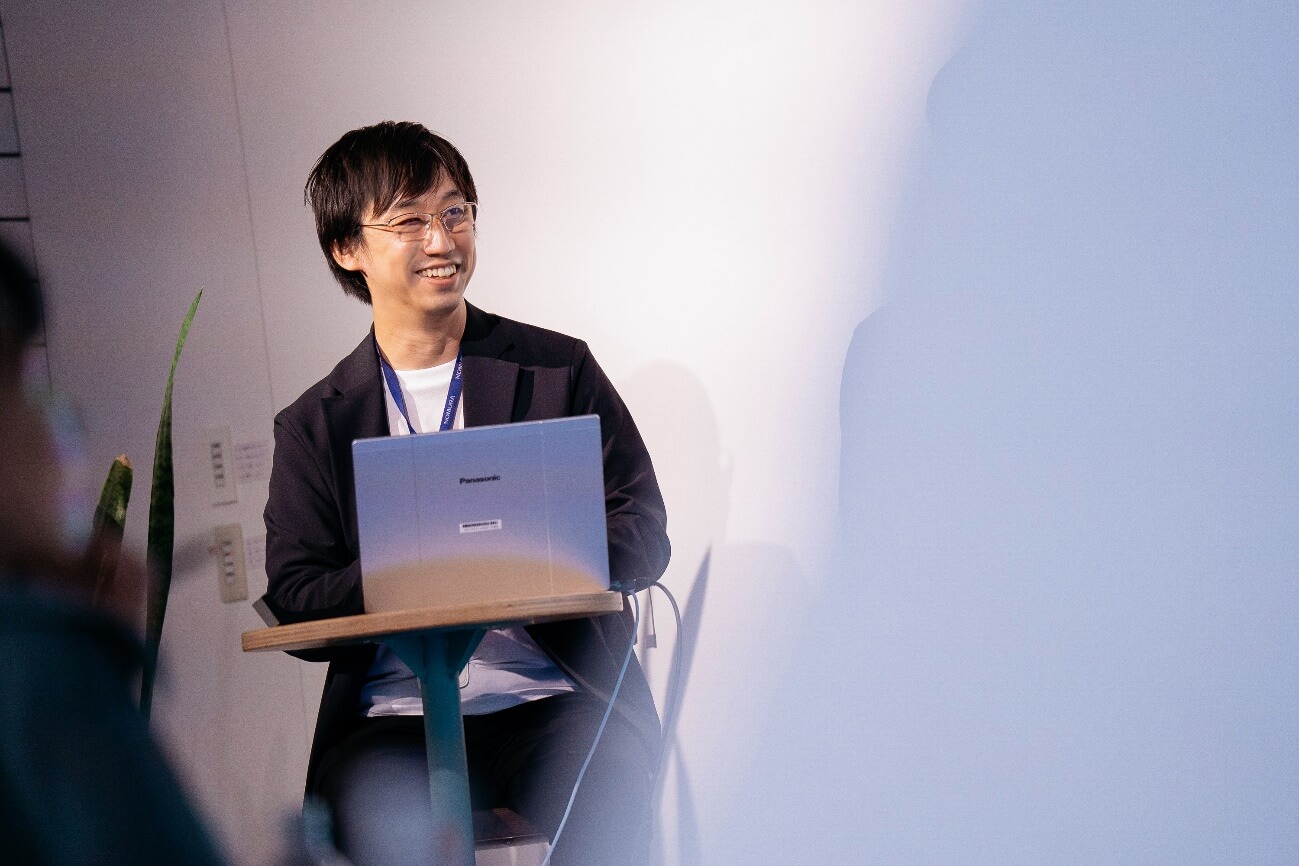
Moderator: Yuichi Saito of the Future Creation Research Institute
Saito
Our Future Creation Institute operates under the concept of a "creative research institute." Our research subjects cover a wide range of themes, but as a starting point, we are working on a future insight project to grasp "what the space of the future will be like."
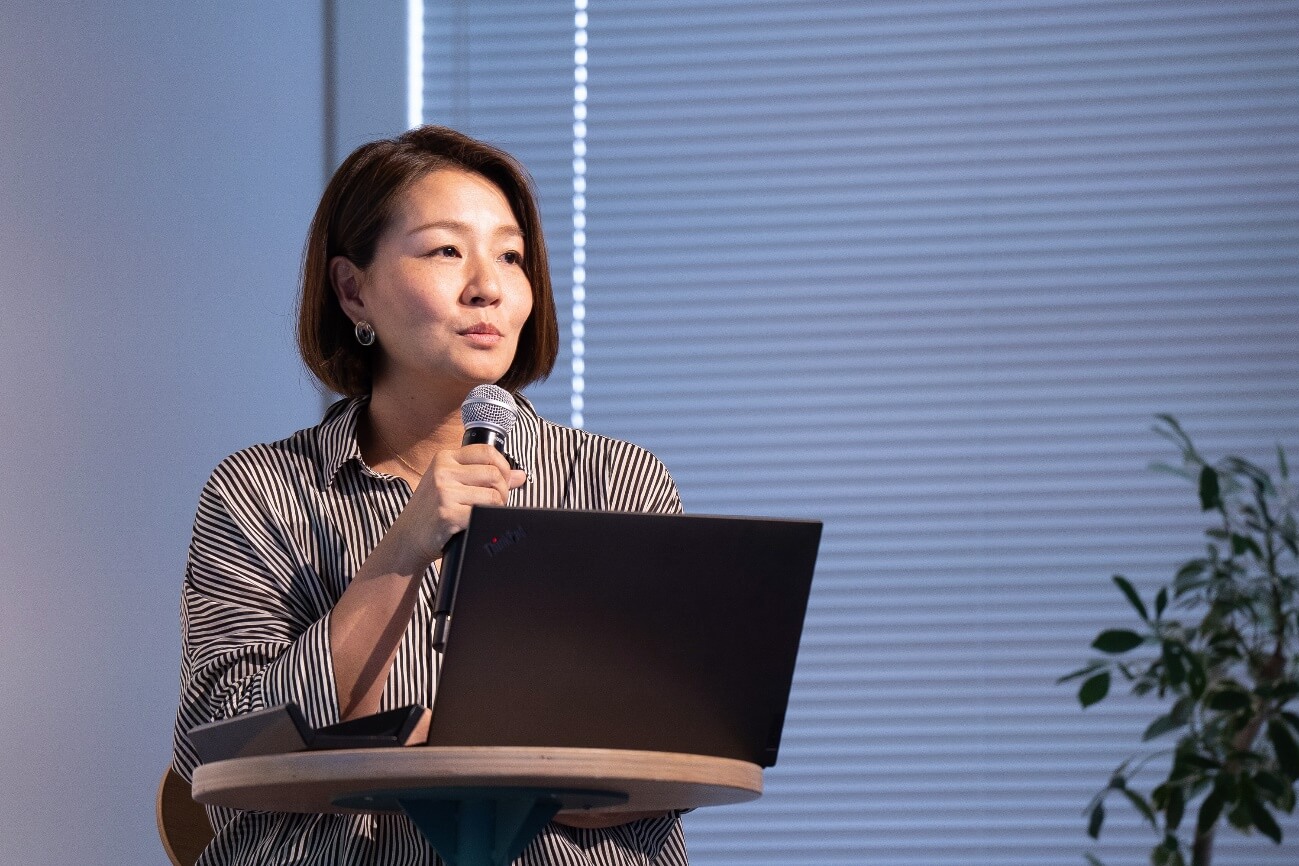 Akane Yamaguchi, head of the Future Creation Research Institute NOMLAB
Akane Yamaguchi, head of the Future Creation Research Institute NOMLAB
Yamaguchi
There were two reasons that prompted me to try to foresee the future. The first was that during the COVID-19 pandemic, people around me repeatedly said that in the future, jobs in the real world would disappear and be replaced by digital space, but I was unable to provide a proper evidence-based justification for the necessity of real space. I realized that I needed to think about various possibilities and make thorough preparations so that I could confidently say that the value of real space will not disappear no matter what happens in the world.
Another thing is that since I became a manager, I was able to collect a lot more information than before, and I was able to see the "signs" of the world. I could see small movements, like the "beginning of a mood" in the world. I thought that I should analyze these "signs" carefully.
At that time, I heard that the Future Creation Research Institute was going to be established, and I really wanted to do this kind of initiative here, so I proposed it and started this project. I'm sure there are many aspects that are completely naive compared to those of you who are already working on future insights, but I would like to listen to your opinions and brush up on it from our unique perspective on creating spaces.
Collecting signs before your eyes to predict the future
Saito
As the project progressed, it became clear that there were two steps: first, the awareness and behavior of consumers changed, and then the space changed. Therefore, in the first year, we focused on changes in consumer behavior and worked on the phase of predicting changes in consumer awareness and behavior by collecting and analyzing "signs" of consumers.
To gather "signs," we asked for the cooperation of a company that has a database of advanced consumer groups, and team members also collected information from news and social media around the world while looking at megatrends and technology trends. Using an analog method of posting information on an entire wall, we held repeated discussions over a period of six months.
There are three social changes that are the premise for future insight. The first is change in social structure. The most basic future prediction is demographics, with the obvious issue being the declining birthrate and aging population. As this progresses, not only will the population change, but issues with pensions and medical costs will emerge, politics and policies will change, and even the way we work will be affected.
The second is a change in values. I thought that the influence of SNS was a big factor, but it seems that the underlying change is that local ties and blood ties have weakened, families have become smaller, and people no longer care about the opinions of their community. And the third is the change in technology. Changes such as VR and the metaverse are surprisingly gradual, but on the other hand, AI is progressing rapidly.
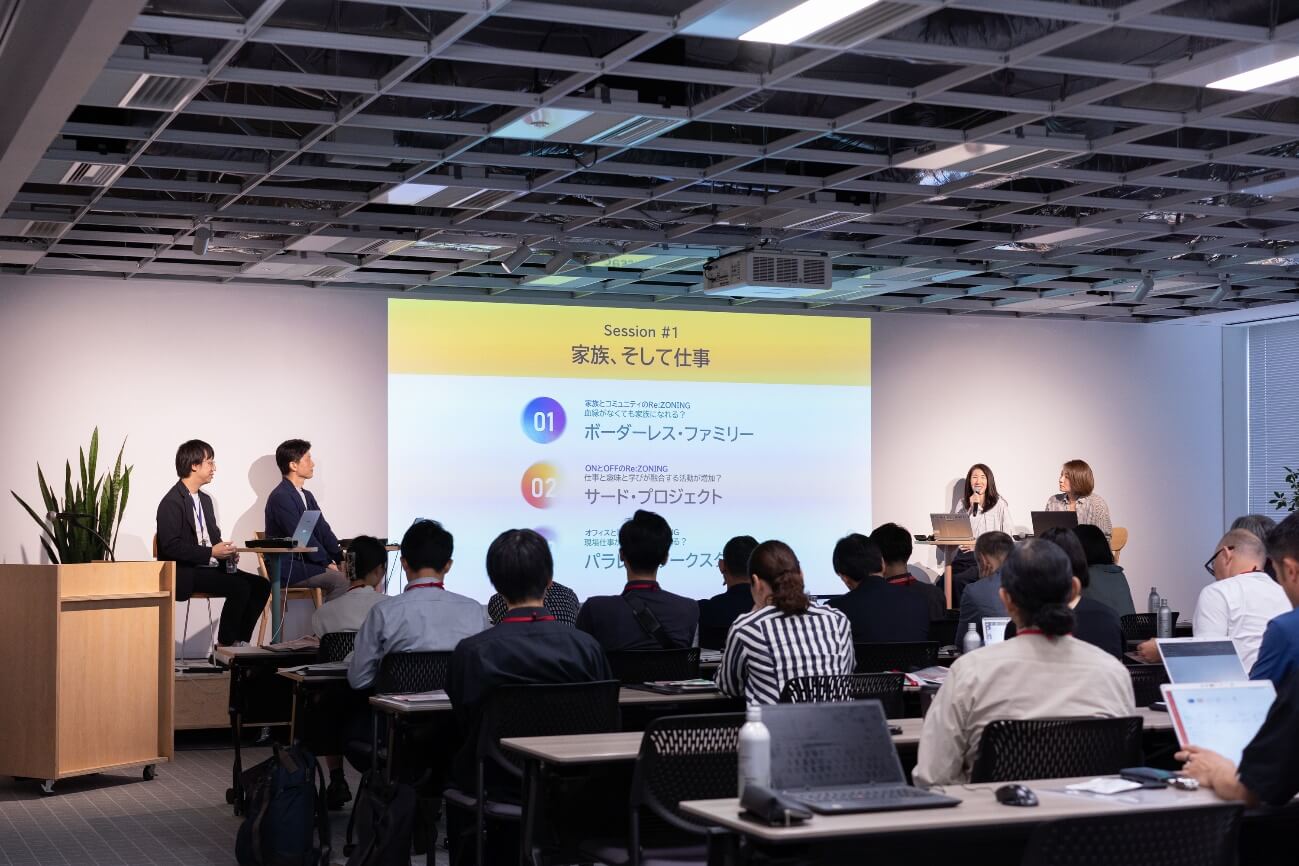
Many people from inside and outside the company participated in the talk session
The theme of "Re:ZONING" discovered through macro changes
Saito
The concept of "zoning" is very important in creating spaces. Now, this zoning, that is, the way boundaries are created, is changing. A recent example would be the theme of gender, which is easy to understand. What was previously a binary of male and female has become blurred. This means that the zoning of restrooms, for example, will change. In other words, changes in space are occurring due to changes in the people who live there.
From this analysis, the Future Creation Institute has presented 11 insights that offer insight into the space of the future. In today's session, we will select eight of these insights and divide them into three sections for discussion: Session 1: "Family and Work," Session 2: "Technology and Happiness," and Session 3: "Environment and Living."
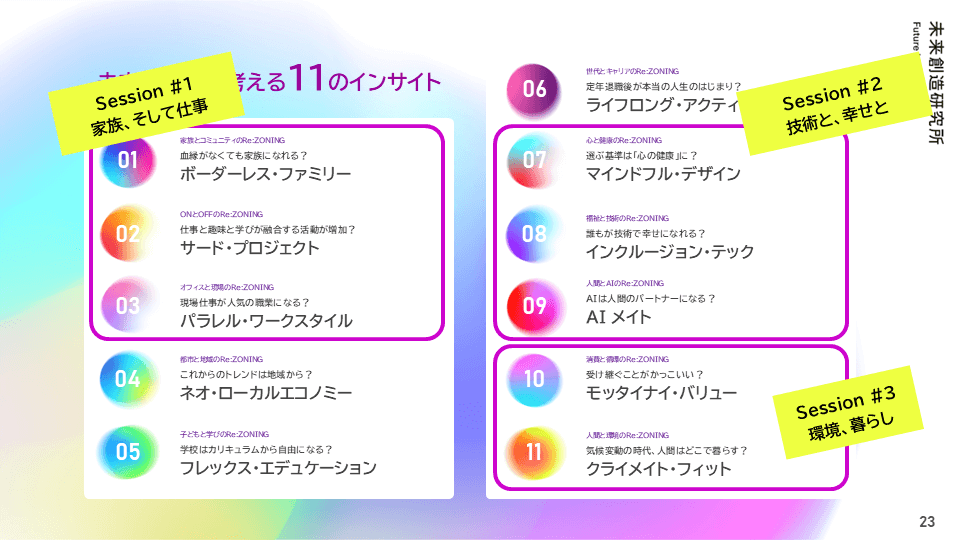
Eight insights discussed during the session
Session 1: Future insights into family and work
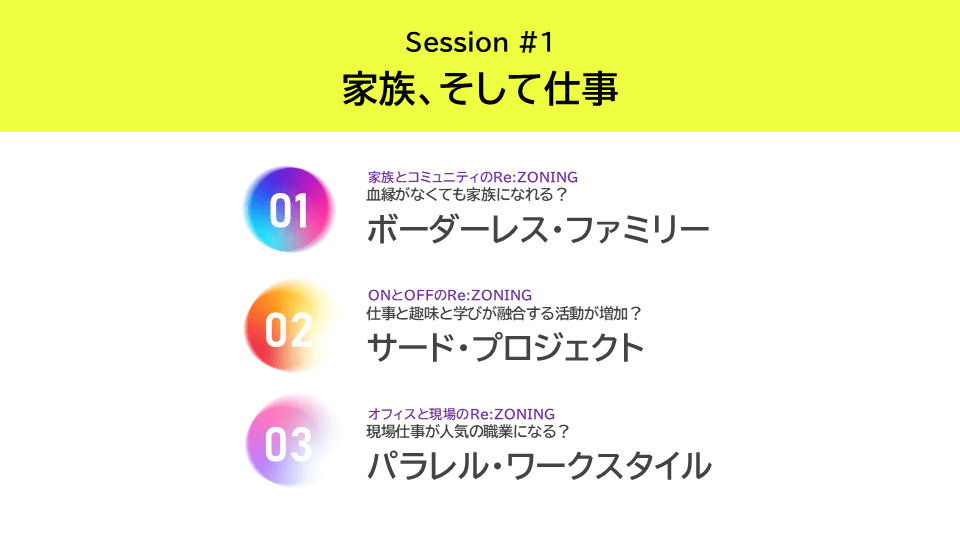 Three Insights on Family and Work
Three Insights on Family and Work
Saito
The first is "Re:ZONING Borderless Family for Family and Community." Can you become a family without blood ties? We asked the question. As the birthrate declines and the population ages, the proportion of single-person households has increased from about 20% in 1980 to about 40% in 2020. More and more people, both young and old, feel lonely in single-person households. In this environment, there are signs of 60 creators living together as an extended family. Until now, families have been formed based on blood ties, but we may see more and more borderless families, where people live together as pseudo-families without blood ties. Actually, Yamaguchi has built an interesting relationship with his neighbor, so let me tell you a little about it.
Yamaguchi
About five years ago, we started to naturally start living together with our neighbors, mainly on weekends. For example, on Saturdays, when my son comes home from baseball practice, we start drinking beer together in the space between our houses, and in the evening, we naturally gather at one of our houses to eat dinner together. My eldest daughter contacts me on her way home from cram school, asking, "Where are you going to eat today?" We only use one of the kitchens that day, and only one person has to do the washing up. We do it because it's fun, but it's actually easy, and I think it's surprisingly efficient.
Saito
This may be what a tribe is all about. The second is "ON and OFF Re:ZONING Third Project". The boundaries between work and private life, which were previously clearly separated, are becoming blurred. More people may start a third activity, or a "third project", that pursues intellectual curiosity by combining work and hobbies, work and learning, and work and investment. And the third is "Office and field Re:ZONING Parallel work style". With the advent of AI, office productivity may improve and the total amount of office work may decrease. On the other hand, as you all know, there is a shortage of workers for physical work on the field. As a result, the distinction between office work and physical work may become blurred, and field work may become a popular occupation. We have the insight that new innovations may be born from the influx of people who are good at planning and digital to the field.
Iida-san
We are also working on future insights, and we have created a scenario that is very similar to the Borderless Family, so I would like to introduce it briefly. This scenario was created last year, and it is about the birth of a new living community called "Yoriai KAZOKU" in 2035. The reason we wrote "kazoku" in the Roman alphabet is because it is not a family of blood ties.
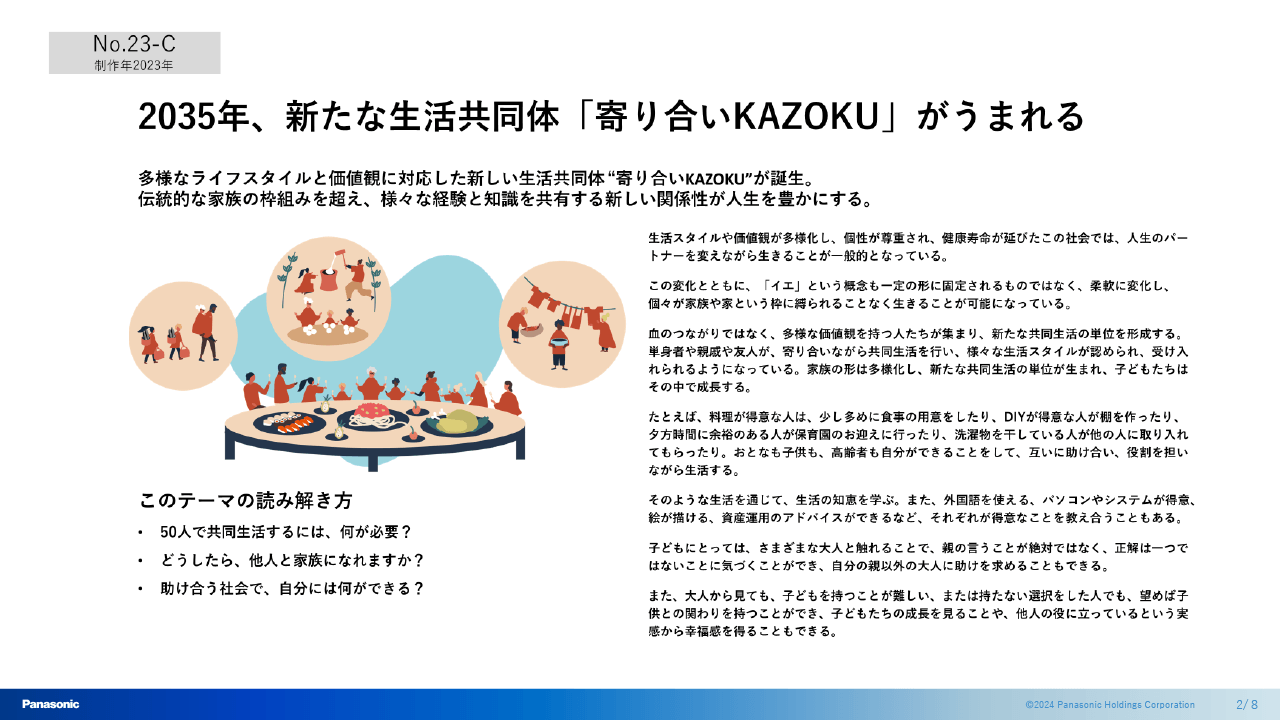 Scenario on "KAZOKU Gathering" (Panasonic Holdings Co., Ltd.)
Scenario on "KAZOKU Gathering" (Panasonic Holdings Co., Ltd.)
If this kind of future comes about, I think the nature of so-called blood-related families, families living under the same roof, will change. If that happens, many things in the world will have to change. Rather than saying "this is what will happen, so please do this," I think future scenarios are questions that ask, "if this is what will you do?"
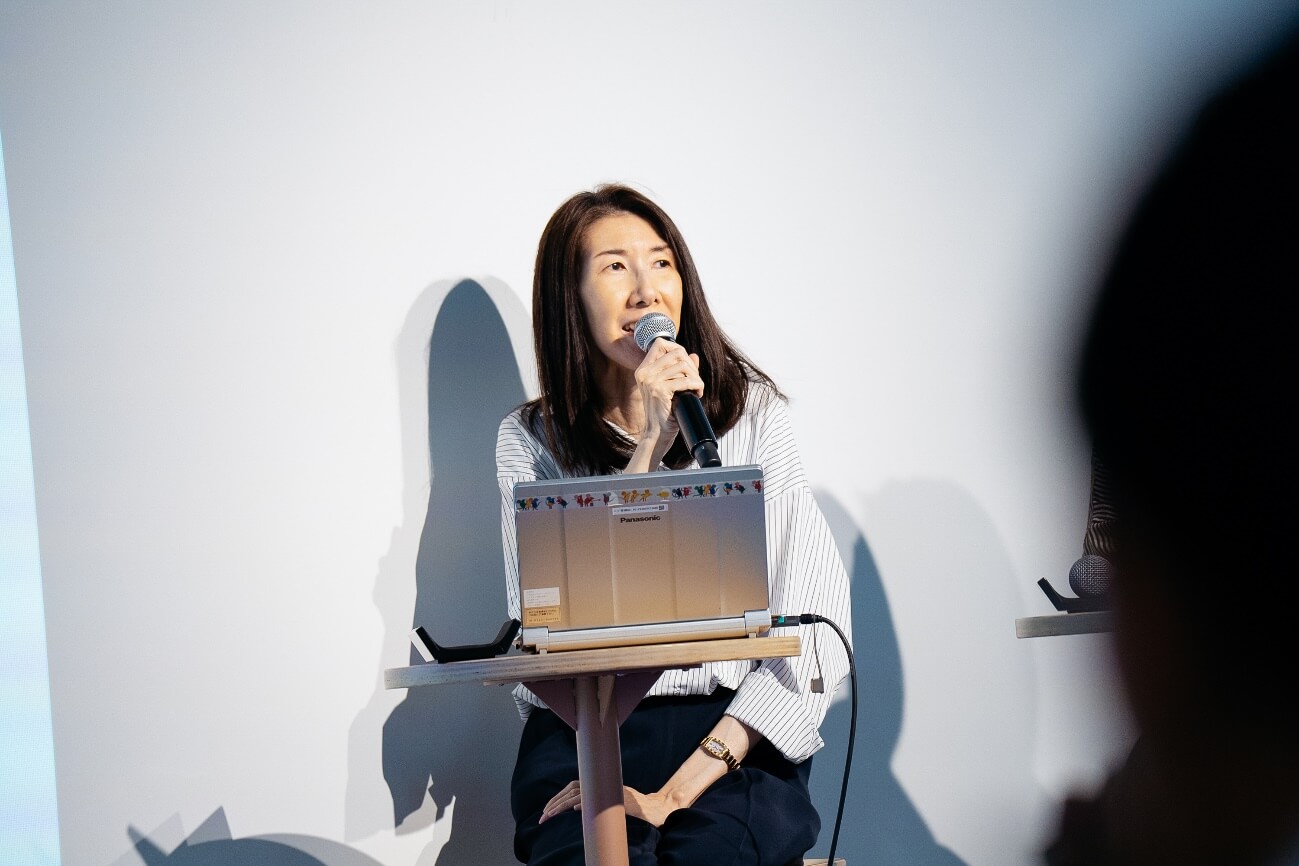
Hiromi Iida, Panasonic Holdings Co., Ltd.
Ogawa
I think a sense of belonging is important in family and work. Japanese people especially have a very strong sense of belonging to regions and places. On the other hand, regarding the sense of belonging to a company, many young people these days do not work for the same company forever, but change jobs every few years to advance their careers. Even in my company, there are more and more young people who change jobs, go independent, or go to MBA while working. I have also started to think that I should work under my own name, not the name of the company. After all, it is people who work together. In the case of a joint venture between companies, it is called a JV, but it goes beyond the framework of the company and works individually. I thought that there might be a borderless company rather than a borderless family.
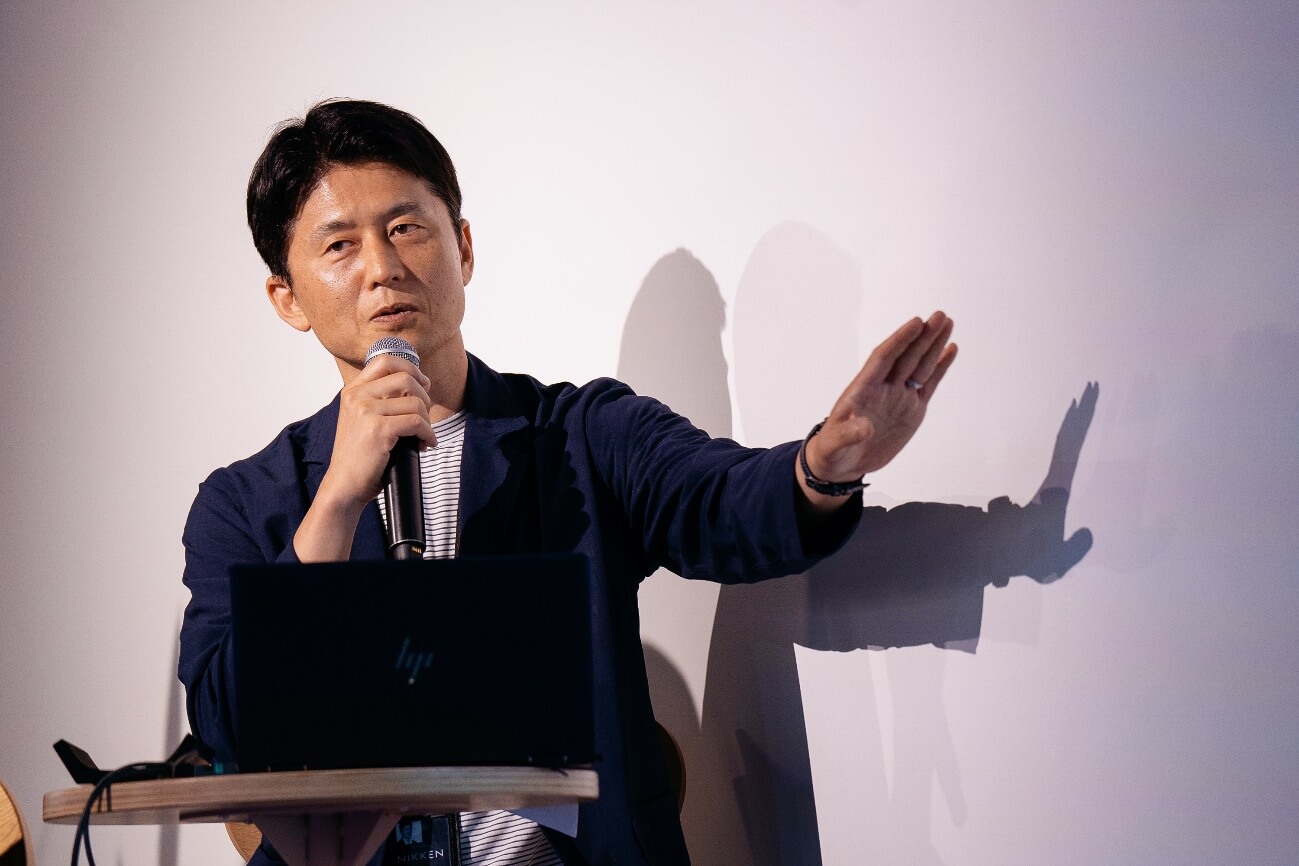 Mr. Takahiro Ogawa of Nikken Sekkei Research Institute Ltd.
Mr. Takahiro Ogawa of Nikken Sekkei Research Institute Ltd.
Saito
Mr. Ogawa just mentioned the keyword of a sense of belonging, and coincidentally, in the office project that Yamaguchi and I are involved in, we also discussed the importance of a sense of belonging when thinking about an office.
Yamaguchi
Since the COVID-19 outbreak, the number of free address offices has increased. It's good that we can now choose where we work, but I feel like it's unreliable, so I think the next office we create should have a sense of belonging, or a sense of family. I completely agree with what Mr. Ogawa said about individuals standing up. Although we are in the form of a company, we are basically a collection of individuals, and I think there is a flow in which individuals connect with each other to create something.
Iida-san
Until now, work and private life have been in a binary opposition, but I think that border is disappearing. From a different perspective, I think innovation occurs in the space between such binary oppositions. I think something new will be born from places like Borderless Family and Third Project. I thought it would be good to create such a place or space.
Session 2: Future insights into technology and happiness
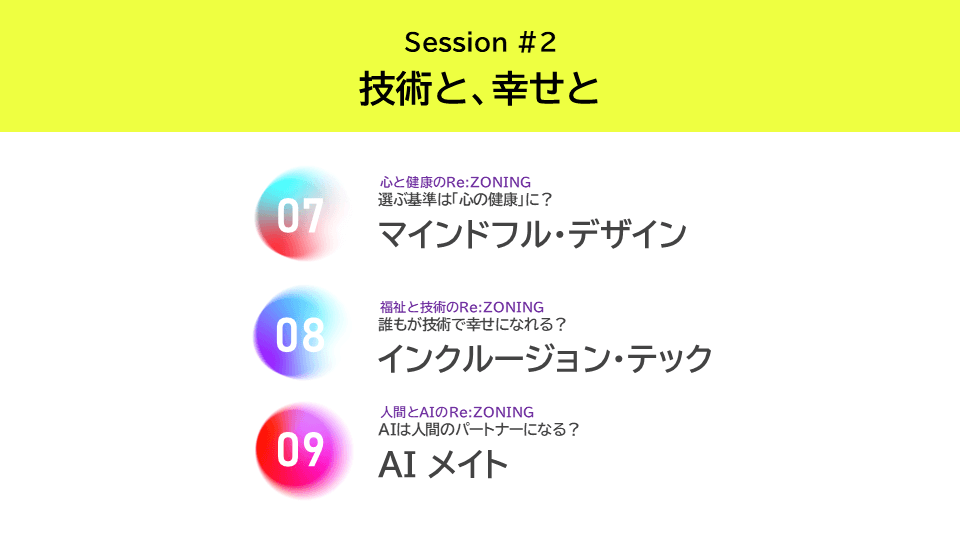 Eight insights discussed in Session 2
Eight insights discussed in Session 2
Saito
In this project, there was lively discussion about how to deal with the theme of health. Of course, physical health is important, but mental health is also important, which led to the insight of "Re:ZONING Mindful Design for Mind and Health." In today's stressful society, interest in mental care and mindfulness is growing. Apps that record mental state have been developed, and some people are trying to understand their own mental state in the same way that they check their health with a weighing scale. As this trend progresses, mental care functions will be incorporated into everyday spaces such as offices, hotels, and vehicles. "Mental health" may become a criterion for choosing a city to live in or a workplace.
The second topic is "Re:ZONING Inclusion Tech: Welfare and Technology." Welfare is an essential theme when foreseeing the future, but here we consider whether technology can make everyone happy. The number of people requiring nursing care will increase in the future, but rather than thinking about what to do when care is needed, there is a growing awareness among both individuals and their families to prepare for it five to ten years in advance. Using technology to reduce the burden on caregivers, create fun and joy for those receiving care, and improve the quality of life for both may become commonplace.
The third is "Re:ZONING AI Mate between Humans and AI". Will AI become a partner for humans? This insight was made six months ago, but the environment surrounding AI has already changed, and it may be that this is no longer an insight but a commonplace. Many people use Chat GPT for work, but people are beginning to use AI as a person to talk to, rather than to improve work efficiency. AI, which was a tool for work, will change into a partner that shares life and emotions, and a lifestyle in which each person has an AI to be their partner may become the norm.
Iida-san
We are also paying attention to how AI will be used. I would like to briefly introduce how we view AI from a future insight perspective. Every year, we hold a workshop-style event where we invite about 20 employees from our group companies to create future scenarios. Many of the scenarios about AI are pessimistic, but there was one scenario that suggested that if all decisions were entrusted to AI that could replace humans and make the most impartial decisions, international conflicts would disappear and there would be no need for war.
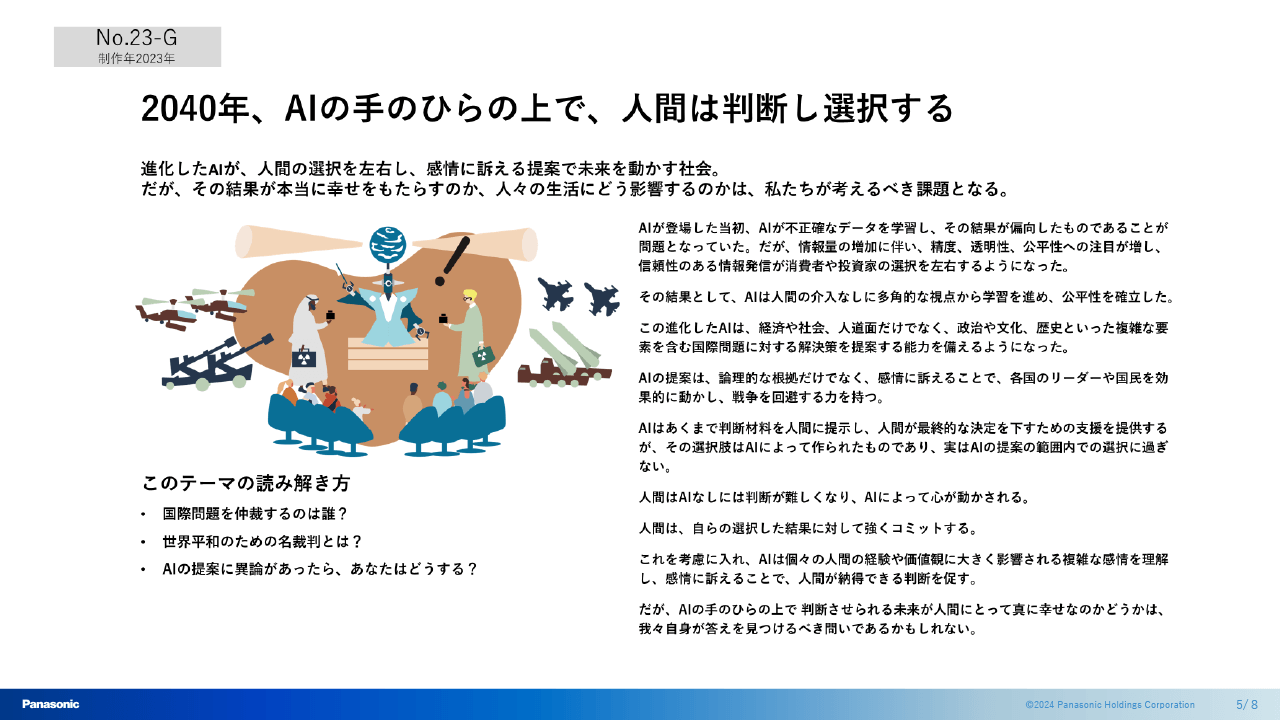 Future AI Scenarios (Panasonic Holdings Co., Ltd.)
Future AI Scenarios (Panasonic Holdings Co., Ltd.)
However, at the end of the scenario, the question was raised: Would it be a good thing for humans if everything were to be decided by AI? There are good and bad views on AI. It all depends on how you use it. The more AI evolves, the more we are drawn to it, but from an engineer's perspective, I also feel a sense of crisis.
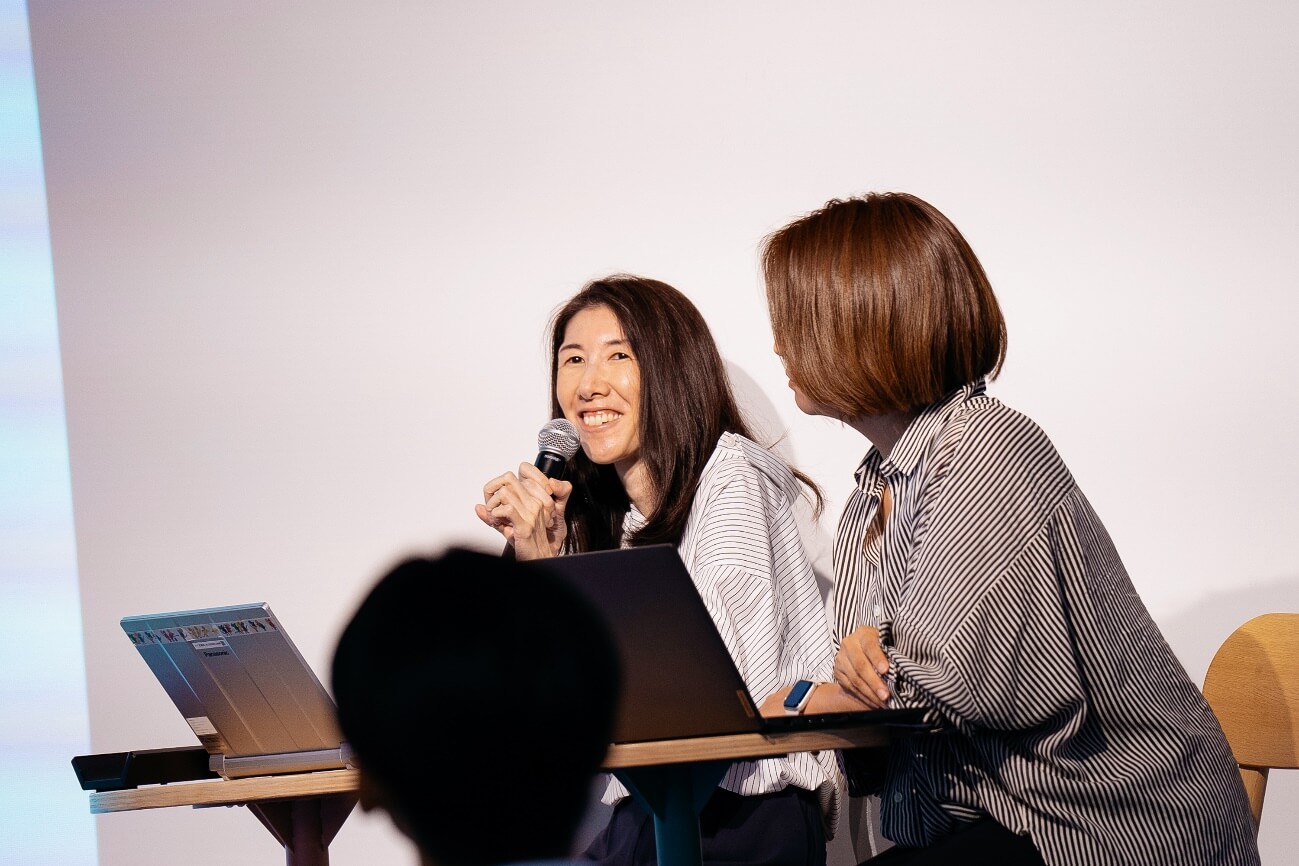
Ogawa
There is a concept called biophilic design. This is the idea that humans fundamentally desire nature and feel happy when they come into contact with plants and soil. Recently, there are cities overseas that are trying to increase greenery, and there are also movements to demolish parking lots and turn them into parks to create pedestrian spaces. I don't think AI can create the relationship between humans and nature.
To give you one example, we used a method called CVM to survey students. We showed them a picture of coffee in a paper cup and asked them, "How much would you pay for this coffee?" However, one of the participants was also shown a picture of a pile of garbage, and the other was shown a picture of an outdoor location with greenery. The coffee in the pile of garbage location was priced at 0 to 50 yen, while the coffee in the outdoor location with greenery was priced at 150 to 350 yen. Just by showing different pictures, the price of the same coffee changed by this much."
Yamaguchi
We at NOMLAB have also begun research into returning to the unique value of nature. I think that the more technology such as AI advances, the more humans will seek out natural phenomena that are difficult to control.
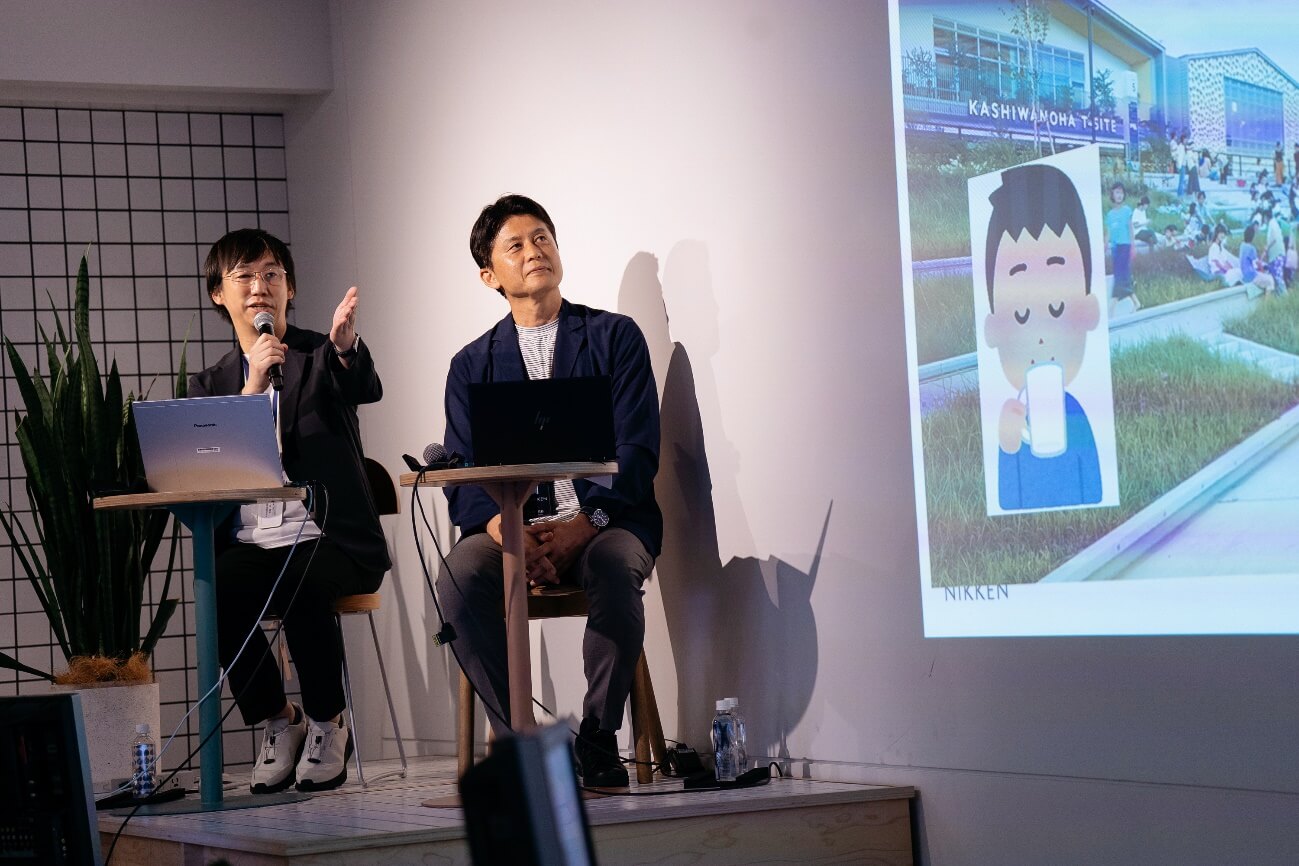
Session 3: Future insights into the environment and life
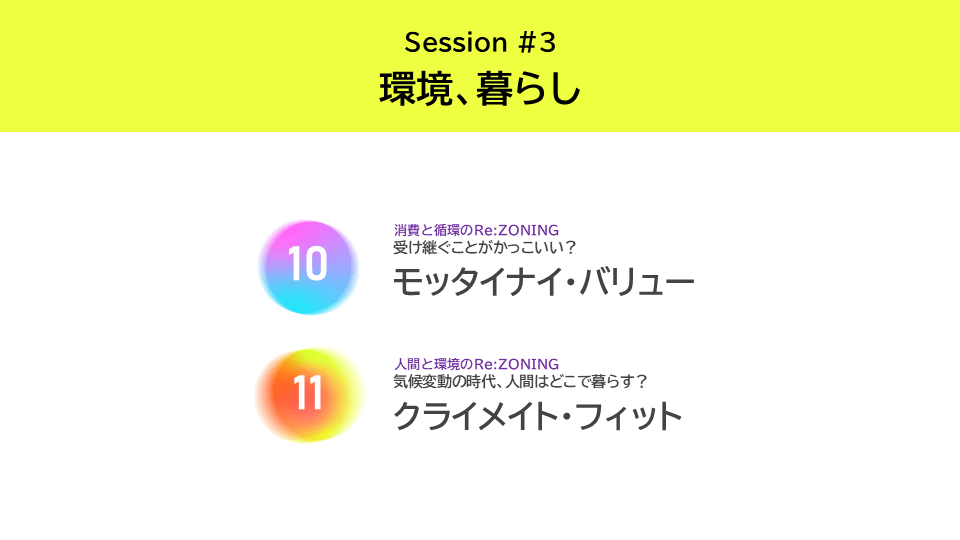 Two insights discussed in Session 3
Two insights discussed in Session 3
Saito
The final session began with "Re:ZONING Consumption and Recycling: The Emergence of Mottainai Value." Rather than being conscious of recycling for the sake of the Earth, there is now a growing awareness of recycling from the perspective of Mottainai. Outdoor goods manufacturers that repair second-hand goods are popular among young people, and an increasing number of people are concerned about whether a product can be properly repaired when purchasing it. Companies are also starting to make products with a Mottainai approach. Until now, mass production and mass consumption have been the norm, with products being made repeatedly in the short term, but the theme is now long-term use. In the future, the perception that second-hand goods are less valuable than new goods may change, and consumer behavior that assumes long-term use of things may become the norm.
And finally, I would like to introduce an insight called "Re:ZONING Climate Fit for Humans and the Environment." The summer heat is getting worse every year, and natural disasters such as heavy rains are becoming more frequent. Until now, people have focused on lifestyles that prevent climate change, but since it has already happened, we may start thinking about optimizing our lifestyles for climate change. We may start to live in ways that match the seasons, or utilize underground spaces that have not been used in homes until now.
Ogawa
There is talk of recycling building materials when rebuilding buildings, and a recent topic is the planting of trees around the ring (large roof) of the Osaka Expo, which will be grown in parks within Osaka Prefecture and transplanted from the site of the Osaka Expo in 1970. There is the idea of recycling, but I think Mottainai also includes the idea of connecting legacies.
Also, from the perspective of legacy, I've heard that the purpose of the Ise Grand Shrine's Shikinen Sengu ceremony, which is held once every 20 years, is to pass on technical skills, but I think that in parallel with this, we also need to continue to develop and sustain the skills and human resources.
Saito
Mr. Iida, what do you think about Panasonic's home appliance industry, where the cycle is much shorter than in the construction industry?
Iida-san
The lifespan of a home appliance is about 10 years, and some people use it for 20 years, but it is unlikely that they will use it for 100 years. In this context, we are exploring whether we can run our home appliance business within the circular economy. We have even experimentally considered home appliances that can be used for 100 years. Home appliances are most valuable when they are purchased, and their fate is that their value decreases as they are used. I fantasise about whether we can make them more valuable as the years go by, like musical instruments such as violins.
Saito
By the way...if we could create home appliances that could be used for 100 years, wouldn't that be tough from a business perspective?
Iida-san
I think we will make a profit from subscription services. We need to create a business model where you pay for maintenance.
Saito
The interior design work we do has a short cycle, with an average lifespan of seven years. What are your thoughts on this, Mr. Yamaguchi?
Yamaguchi
In the construction industry, there are many cases where the framework is left intact and only the surface and facilities are changed, but when renovating an interior space, most of the time, all the interior walls and other materials are removed and rebuilt. This means a lot of waste is generated every time, but the other day, we were asked to upcycle the interior walls and materials of a 15-year-old children's facility. This was the first time we had done this, so we were confused at first, but when we got to work on it, we were able to do some interesting upcycling, such as rearranging various parts. What moved me at the time was that the back side of the interior walls (a place that the general public does not usually see) had been made very carefully. This project was made by our seniors at NOMURA Co., Ltd., but rather than making it simply because it will only be used for a short period of time, it is very important to make it so that it can be passed on as much as possible when creating the next space and can be used for a long time, and I thought that we need to cherish this kind of awareness.
Can the future be predicted? And what is the point of predicting it?
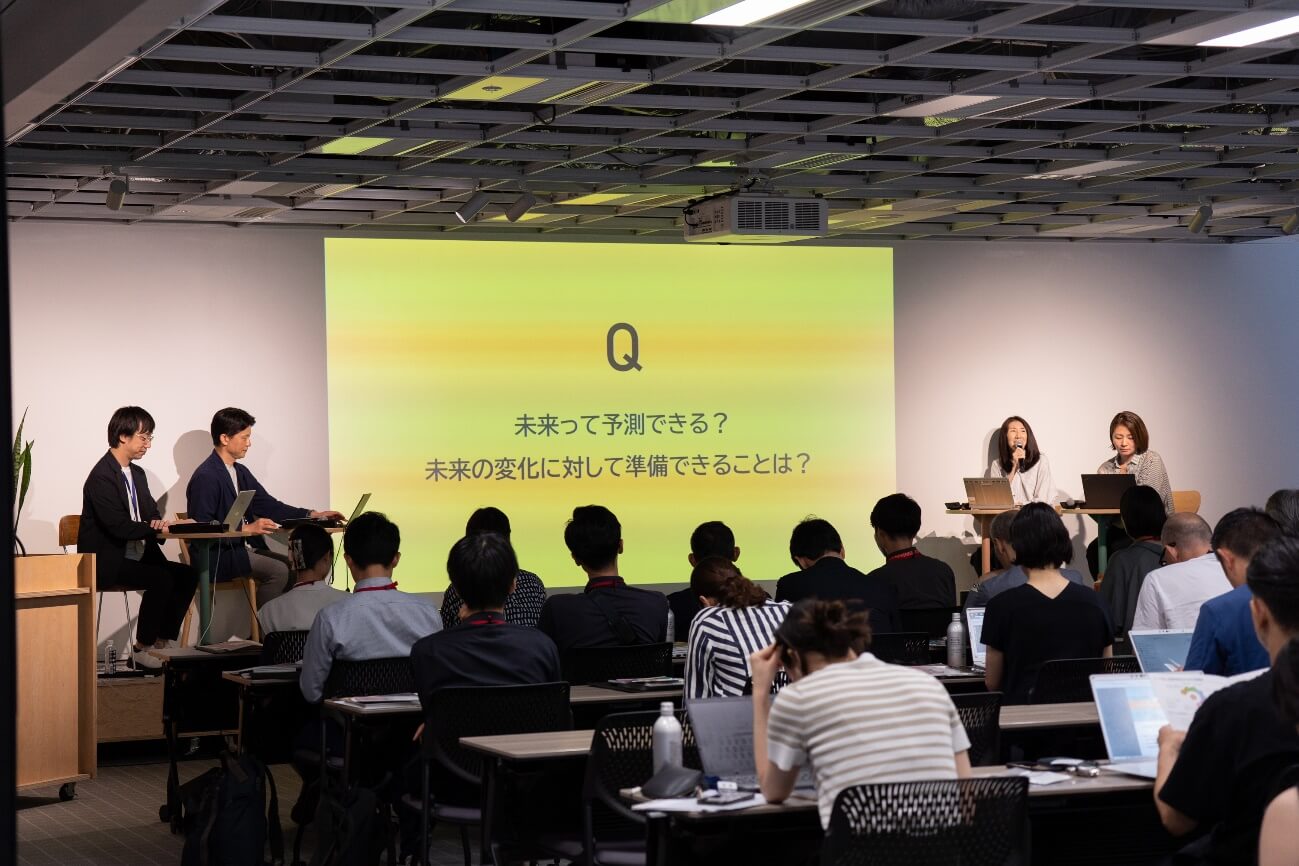
Saito
When I was working on future insight, I realized that while it is important to accurately predict the future, I also began to think about what I want the future to be like and the direction I want to go in, and I think that this is what is important when engaging in future insight. Finally, I would like to ask the two speakers to comment on whether the future can be predicted, what we can do to prepare for future changes, and the significance of predicting the future.
Ogawa
Nikken Sekkei is holding a workshop with 300 employees from its group companies who work on urban issues, and is trying to predict what the year 2050 will be like. We are trying to freely imagine the future, assuming that 2050 will not be an extension of the past, but that things we have not predicted will happen and there will be drastic changes. Among the keywords that came up were population decline, disasters, climate change, globalization, mobility, AI, and inequality. We are currently discussing each of these and trying to make predictions for 2050.
As for the significance of predicting the future, I think it is necessary for us to live happily. Also, I think it will be difficult to complete everything by one company from now on, so I think it is important to create new value by collaborating with various people.
Iida-san
In response to the question of whether the future can be predicted, I think there are some futures that can be predicted almost accurately, and some that cannot be predicted at all. Demographic trends and technological trends can be predicted to a certain extent. When it comes to the future that cannot be predicted, I think it is important to develop technology and make strategies based on the premise that it cannot be predicted. Anticipating many such unpredictable futures is important in creating strategies in an era of rapid change.
Next, regarding the significance of making predictions, I feel that they are useful for developing human resources and broadening one's horizons. We engineers are very knowledgeable about our fields of expertise and can speak at length about them, but when it comes to talking about the future, everyone is dumbfounded. However, when we encourage people to create hypotheses about social change in workshops and introduce various signs of the future, their interest gradually increases, their expressions change, and they begin to assert that such a future may be possible. They go home radiant, saying, "Until now, I thought that future insight was something that higher-ups in a company did, but now even we can make predictions."
Creating scenarios for the future is of course important, but I realized that there is value in the act of thinking about the future itself.
Saito
Although we hadn't prepared anything for it, both of them said that future insight is fun and exciting. In fact, at first, we were a little worried that we might be scolded later if the future we predicted was incorrect. However, instead, we had a hypothesis and thought about how we wanted the future to be like this! This project made us feel energized as a company. Thank you very much to everyone today.
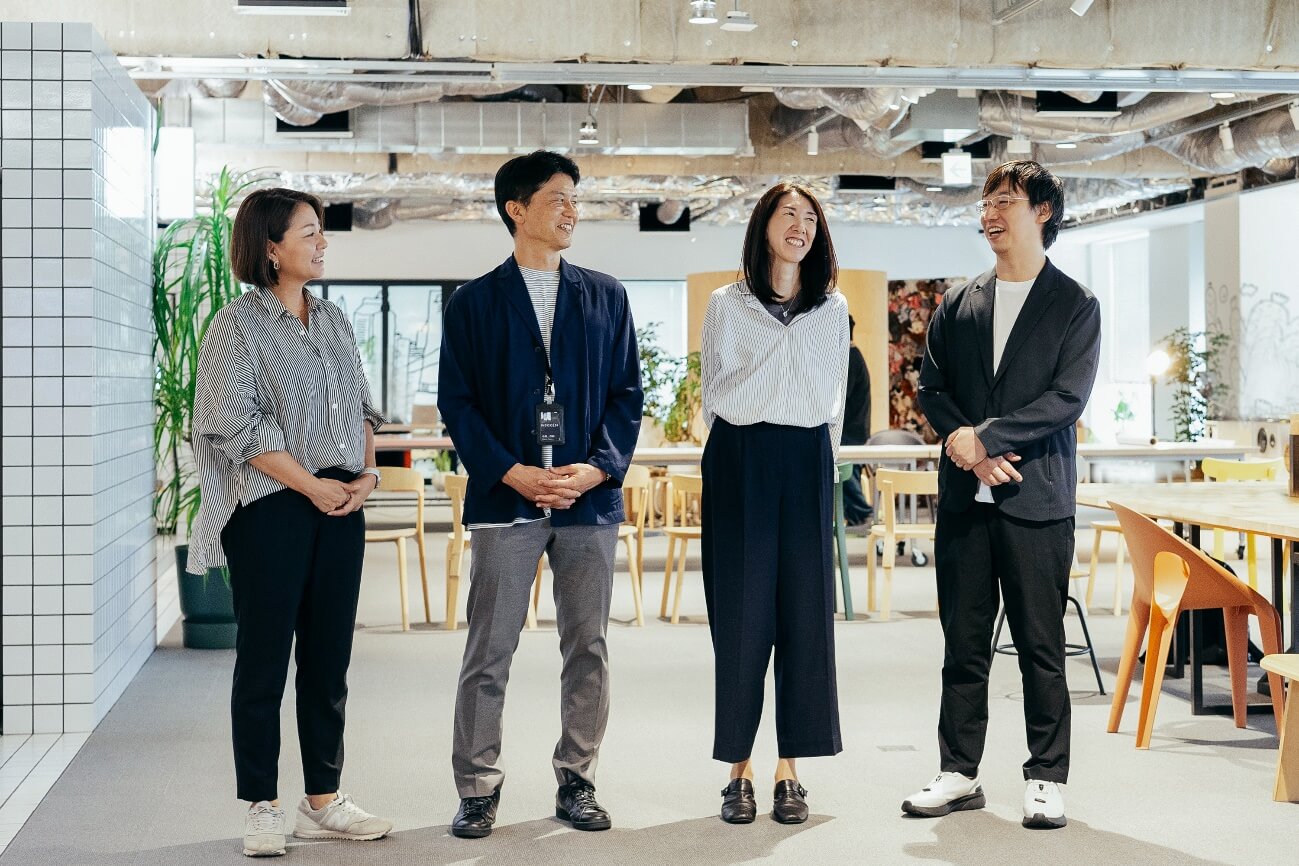
●What will the space be like in 2030? Click here to download the "Future Insight Report Re:ZONING Phase I."
Like this article?
- editor
-
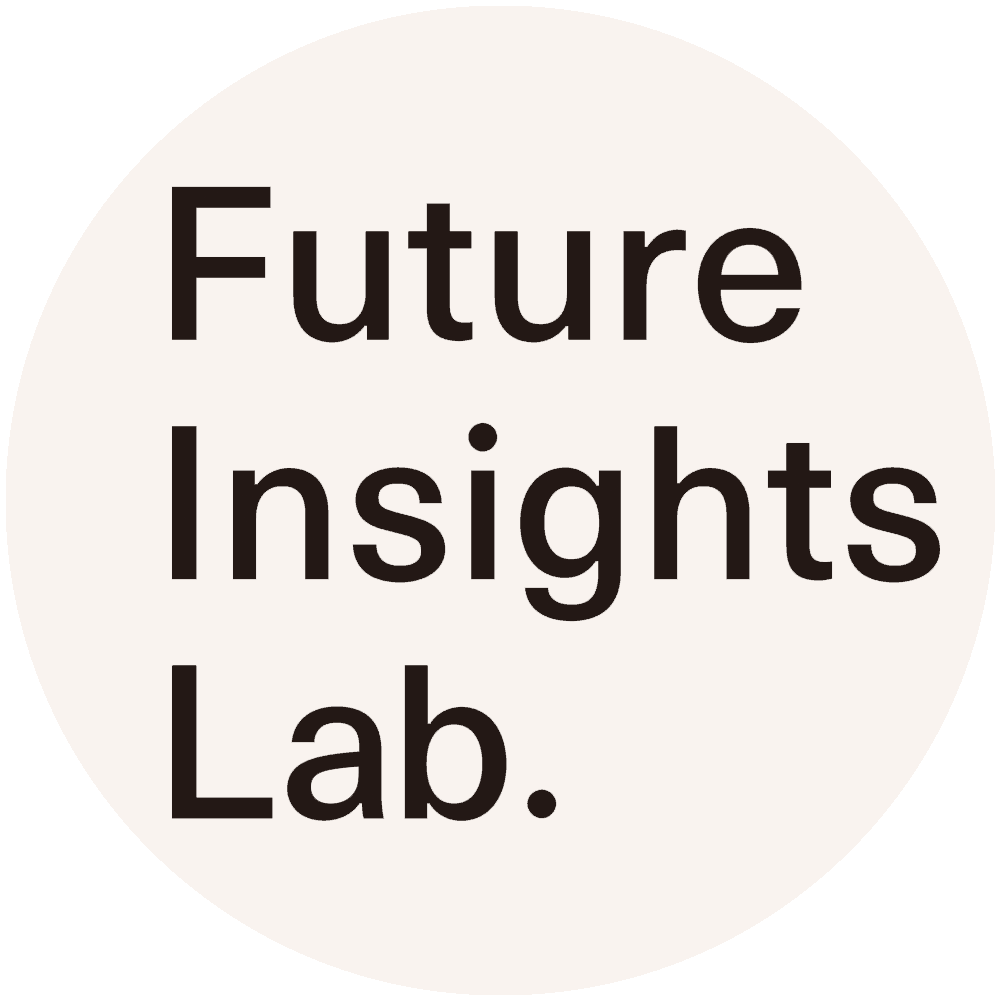
-
Future Creation Research Institute
Research, creativity, and the future
Creative Research Institute

